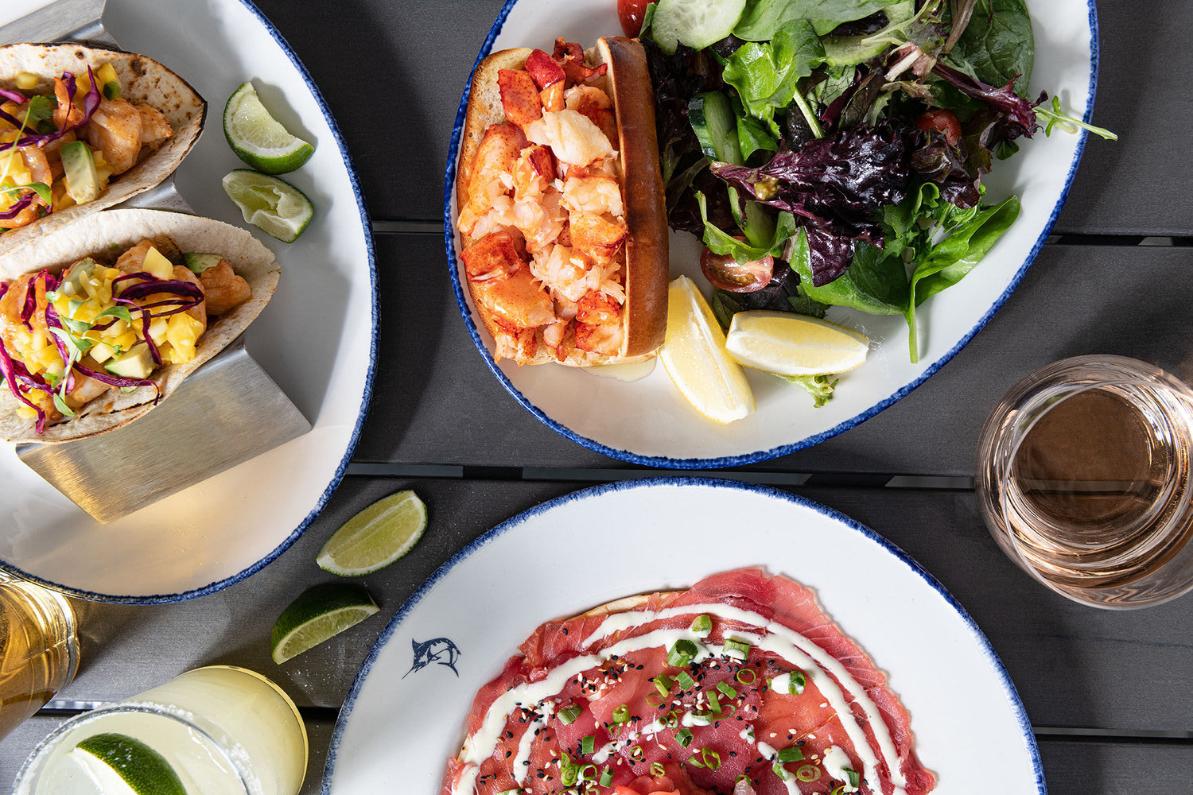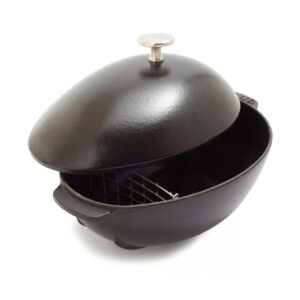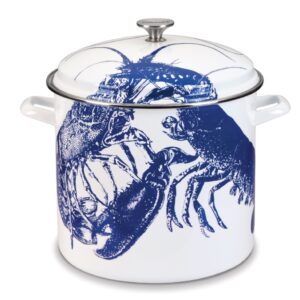Spring and summer are around the corner—and you may be counting down the days until you’re sitting seaside with a plate of fresh seafood and a chilled glass of wine in hand. And, if you’re local, Norwalk’s Rowayton Seafood, with its restaurant and market, is a go-to place to find fresh offerings on the menu and to make at home. (And they’ve got that whole water view thing down, too.)

Here, we talked to Barbara Bates Conroy, Rowayton Seafood’s brand manager—and the writer of their recent (and beautiful!) coffee table book, A Touch of Salt—about what readers can expect from the book, why tinned fish is so popular right now, tips for cooking seafood at home and more.
Q: As we head into the warmer weather—finally!—what advice do you have for diners on picking the best seafood?
A: The best seafood is a matter of taste. We find our male guests prefer swordfish while our female guests prefer salmon. Our staff in the restaurant and in the seafood market are well educated in the properties of all of our seafood, where it is caught—which is really important—and how to prepare. Many of the species are migratory so on the East Coast, as the water warms up, we will see the large species like tuna, swordfish and bass on the menus and available for purchase at the market. Great options for the grill at home as well.
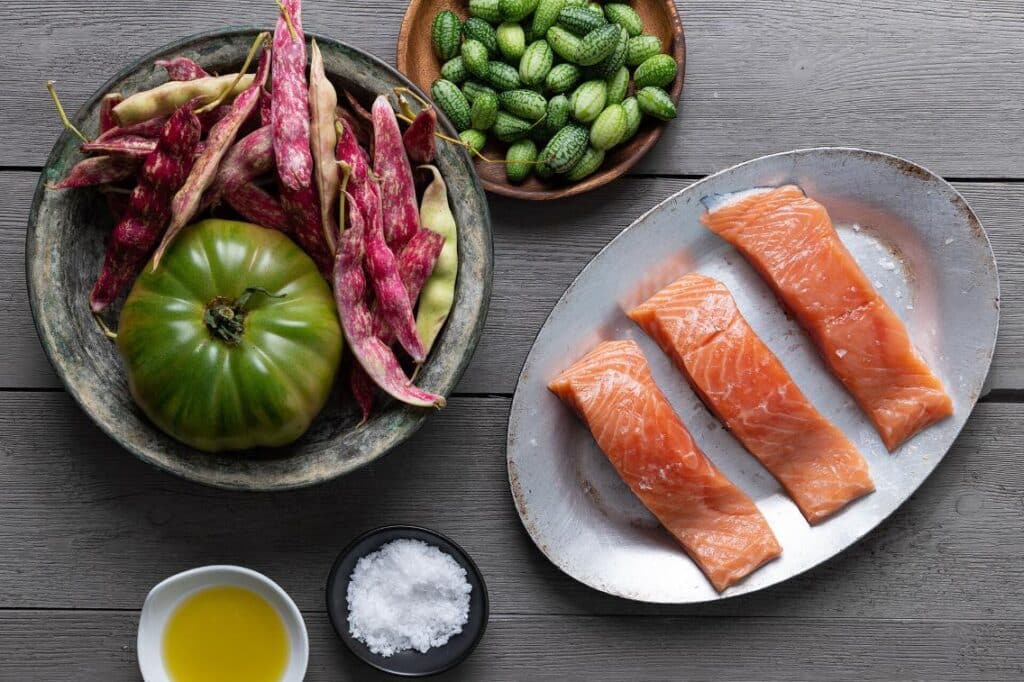
Q: We love the rediscovery of tinned fish and know that Rowayton Seafood has been a pioneer in offering this to the community. What do you think makes this type of seafood appealing—and any specific types that you’d recommend?
A: I have always loved tinned fish (conservas). My favorites include mussels, sardines, tuna and anchovies. The beauty of this preparation is [that] it is a sustainable source of protein and packed with nutrients. It is like art, as the fresh ingredients are beautifully placed in the tin, likely covered with good olive oil or a sauce, sealed up and lasts forever. Tinned fish are versatile, can be tossed with pasta or in a salad. We like to serve with crunchy bread, accouterments like pickled onion, olives and cornichons are a nice compliment to the fish.
Q: You recently wrote the cookbook, A Touch of Salt, featuring recipes from Rowayton Seafood. How was your experience writing it—and what can readers expect? Any favorite recipes?
A: A Touch of Salt was a dream for many years. There is so much history on the property. The book features the evolution of the seafood market, and the restaurant—from the original “Rowayton Lobster Co-op” to a wholesale/retail fish market and a seafood restaurant. I learned so much by researching the different seafood species, interviewing the harvesters and anglers. Even though I have been around the seafood business for nearly 40 years, I have a new appreciation for our water, the hard-working men and women who devote their lives to the sea, their families and communities.
The book isn’t a traditional cookbook as I list the “elements” and the steps to prepare. I leave out measurements for two reasons, that is how I cook and it offers the home cook the ability to create their own twist. The book is from “The Rowayton Seafood Family” as some recipes are from the restaurant chef, some from the seafood market, and some of my own.
My all-time favorite species are oysters. Our most popular are the Copps Island oysters that are harvested in the morning from the Long Island Sound and brought to the property by lunch. Add toppings shown in the book or just squeeze lemon
Q. When it comes to buying seafood at home, what should we know? What tips do you have for what to watch for in terms of ingredients and choosing the freshest offerings available?
A. The fishmonger will be very helpful in helping select the freshest options, quantities and preparation tips. I recommend extra virgin olive oil, lemon and salt as the top ingredients to have on hand when preparing seafood. I prefer to let the fish speak for itself, keeping it simple.
When buying a whole fish, eyes must be clear and gills red, a great option for the grill. Filets should appear fresh and moist. Fresh Seafood does not smell! Shellfish are alive. Clams and mussels will open when steamed. If any do not open, they can be thrown away. Oysters are shucked alive. Lobsters are alive when cooked.
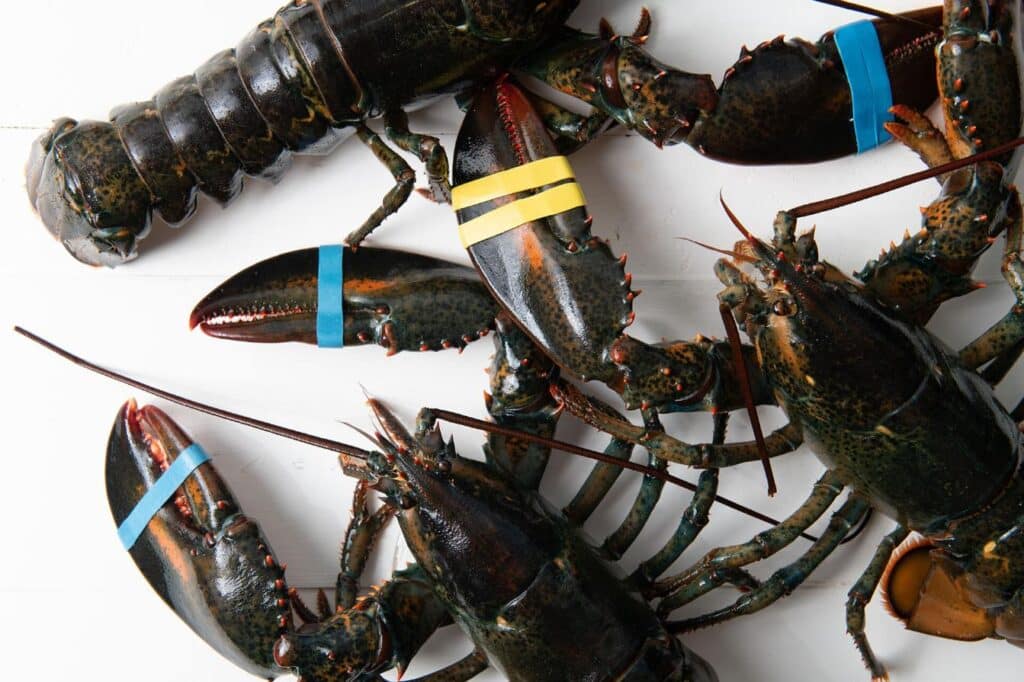
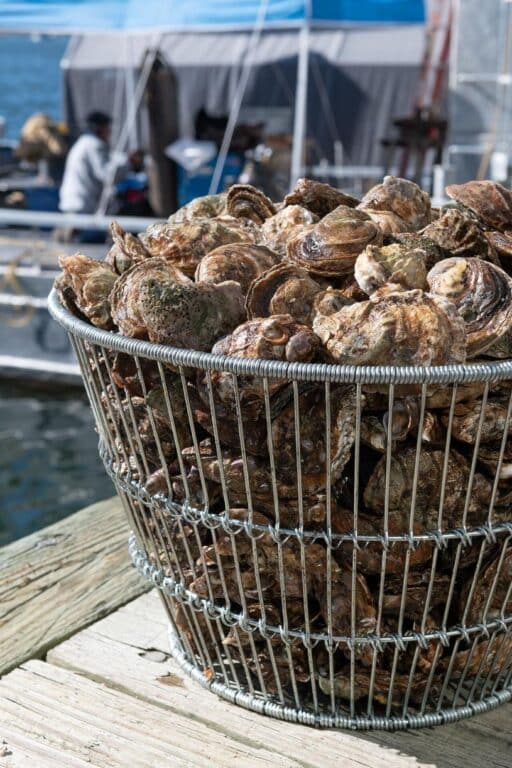
Q. What’s on tap at Rowayton Seafood for the summer?
A. We are busy preparing for our spring/summer menu, which will be live [in the] beginning of May. This will include new specials, cocktails and zero proof options. We have a few exciting plans in our future… it’s still too soon to share. We are gearing up for a busy summer.
Photos Courtesy of Rowayton Seafood
SHOP THE ESSENTIALS
All products featured on Serendipity are independently selected by our editors. However, when you buy something through our retail links, we may earn an affiliate commission.
